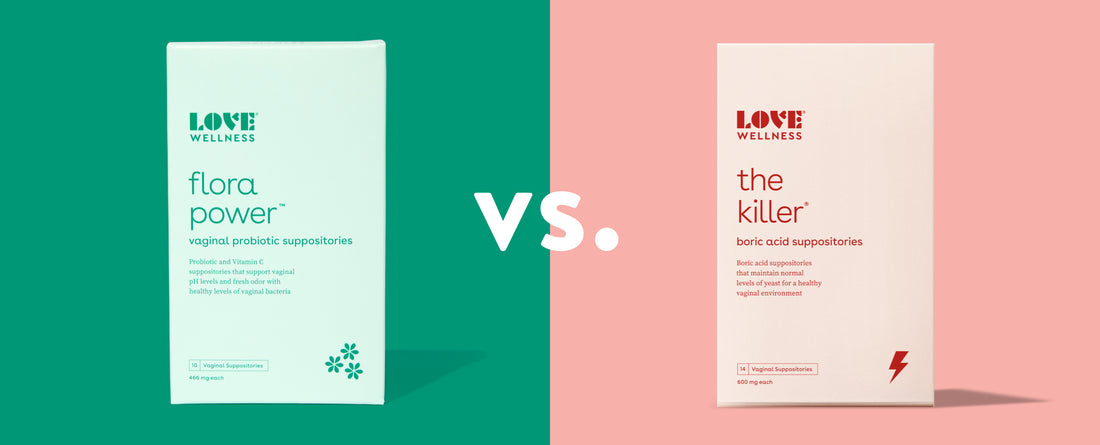Feeling off down there but not sure what to do about it? We’ve got you covered. Just like with your gut, your vagina has its own delicate microbiome filled with different bacteria and yeast—many of which are incredibly helpful!
But what does a vagina typically smell like? How much itching is too much itching? What’s considered “normal”?
If you ever find yourself asking these questions, then you came to the right place. We now have two vaginal suppositories that work on overdrive to get you feeling back to normal—fast.
What Causes Vaginal Odor?
It’s important to keep in mind that your vagina is supposed to have a natural odor, and that each woman’s normal scent is different. Typically, a healthy vagina smells a bit musky, and at certain times during your menstrual cycle, it may even smell a little metallic. The smell may also change temporarily after sexual intercourse.
Usually your vagina naturally cleans itself, and if left alone, it can maintain a healthy pH balance to control the presence of bad bacteria. However, if you detect a major difference in smell, this may indicate that there is a problem.
Vaginal odor can happen due to many different reasons, but some of the most common reasons include:
- Bacterial Vaginosis (BV): notorious for producing a strong, fishy smell
- A forgotten tampon
- Hormones
- Sweat
- Your diet
- Medications
How to Get Rid of Vaginal Odor?
As we mentioned earlier, your vagina does a wonderful job of cleaning itself to keep odors at bay, but on some occasions, you may need to give it a little help…
Try Flora Power
Our new vaginal suppository combines probiotic strains native to the vaginal tract with Vitamin C to support vaginal pH levels and fresh odor with healthy levels of vaginal bacteria. It can be used as a one-off to treat a particular issue like BV. Helpful tip: add it to your routine once a week if prone to BV infections.
What is a Yeast Infection?
Yeast infections happen when a fungus known as Candida refuses to “stay in its lane” so to speak. For various reasons, the Candida begins to multiply and overgrow in your body, ultimately resulting in a vaginal yeast infection. To be clear, the mere presence of Candida isn’t a cause for concern—it’s the imbalance and overgrowth of it that creates the problem, resulting in a yeast infection.
What can contribute to this overgrowth of fungus in the vagina, you ask? Well, Candida exists alongside "good" bacteria called Lactobacillus that work to maintain the delicate balance of microorganisms in the vagina.
Changes in estrogen (like from birth control, hormone therapies, and pregnancy) can throw this balance off—as can taking medications like antibiotics. Wearing wet clothes down there for too long can also increase your risk, as it creates a warm, damp, Candida-friendly environment. So take your mother’s advice and change out of your sweaty workout clothes or wet swimsuit right away!
Common symptoms of yeast infection are:
- Vaginal irritation
- Vaginal itchiness
- Swelling of the vulva
- Thick, cottage cheese-like discharge (usually odorless)
How to Get Rid of a Yeast Infection?
Getting rid of a yeast infection really boils down to curbing your Candida overgrowth (stay in your lane, Candida!). We suggest…
Try The Killer
It’s an OB/GYN-recommended boric acid suppository that balances pH and maintains healthy yeast levels. It can be used after sex, on the last days of a period, or when dealing with vaginal yeast infections.
Flora Power Vs. The Killer
Want a cheat sheet? We made you a handy chart!

The best part is for ongoing vaginal care you can use Flora Power and The Killer together! Use The Killer to resolve a yeast infection and Flora Power as a one-off spot treatment for added freshness.
